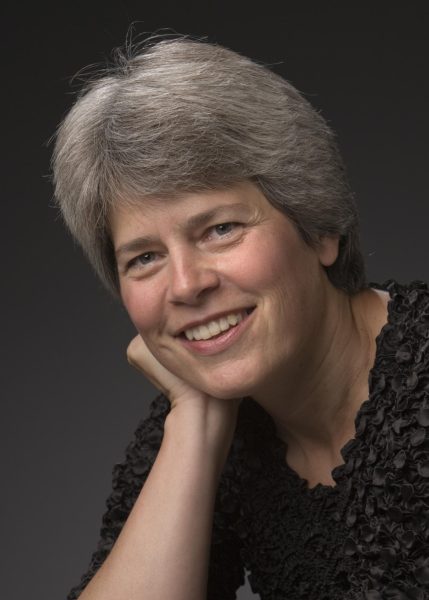Update on Conservatory Presidential Initiative Goals
Sept. 9 marked the two-year anniversary of the Conservatory’s 2020 action plan, “Towards a More Equitable and Diverse Conservatory Education: Statement from Oberlin Conservatory Faculty.” The plan was a Conservatory-specific extension of the 2020 Presidential Initiative. This document was made in consultation with students, alumni, and student groups, particularly the Oberlin Conservatory Black Musician’s Guild.
The report was divided into eight sections: curriculum and pedagogy; programming, repertoire, and performance; admissions and auditions; personnel; climate; community engagement; student success; and advisory council. Over the coming weeks, through a series of in-depth articles, the Review will examine how the Conservatory has addressed its targets through a series of reforms over the past couple of years. This article will examine how the Conservatory has addressed two of these areas: curriculum and pedagogy and admissions and auditions.
Curriculum and Pedagogy
The focus of the Curriculum and Pedagogy section was on restructuring a set of nine classes taught over four semesters for first and second-year students that served as the core curriculum required of all Conservatory students regardless of their major. An institution-wide curriculum review was initiated in 2019 as part of the One Oberlin plan, so the work was already in progress when this report was released.
The four-semester music theory sequence has undergone the most noticeable restructuring since the release of the plan. Students no longer need to take a linear path through the four-semester track that encompassed Western harmony and analysis in every class. That sequence has been shortened to two required classes, and from there, second-year students choose from a slate of 200-level courses, some of which deviate from a Western music focus. This semester, courses offered at this 200 level include Questioning Genius, Jazz Theory II; and Scales, Sets, Series, and Spectra.
While students could previously test out of one or more core music theory courses, all students now must take Music Theory I and II during their first two semesters.
The form and structure of these two core music theory classes have also been changed. Previous iterations of the class included learning goals such as “compose short exercises in the style of 16th- and 18th-century composers” and “develop and apply a vocabulary for describing diatonic harmony with Roman numerals.” These kinds of classical-centric approaches are now accompanied by topics including jazz and pop notation, atonality, and blues and jazz tonal forms.
“By letting go of four-part voice-leading, we’ve made space to do so many other things,” Associate Professor and Division Director of Music Theory Jan Miyake said. “I like voice-leading, but that’s not all of what music theory really is.”
Within this greater restructuring, the Music Theory department has also added an introductory course, MUTH 120: Introduction to Music Theory, a course that is geared toward incoming students who need to strengthen their music vocabulary and other fundamental skills before tackling upper-level classes.
For Professor of Music Theory Brian Alegant, who is currently teaching MUTH 120, the structure of the class is unlike anything he has encountered before.
“It’s as diverse as I can make it – we started with Hildegard von Bingen; have explored classical, romantic, contemporary, pop, metal, and jazz; and will devote a ton of time to contemporary music after break,” Alegant wrote in an email to the Review. “This is a wide lens.”
Although the four semesters of aural skills courses were also considered for restructuring, their forms have remained mostly unchanged. Miyake, who served as one of the chief architects for the restructuring of the Music Theory division, explained how the decision was made to preserve most of the aural skills curriculum.
“We’ve actually found less urgency in aural skills to change,” Miyake said. “It’s very dependent on five-line staff notation, and I’m not sure how, or if, it would be right to get away from that. It’s pretty much the only class that forces students to engage deeply with five-line staff notation.”
Reforms also targeted the musicology side of the Conservatory and specifically focused on making the entry-level class, Music History 101, a less central part of the curriculum. The report made two important points: eliminate MHST 101 as a prerequisite for all Music History courses and revise the title and course description to better capture its course content.
Currently, only some of these changes appear to have been realized. While MHST 101 has been eliminated as a course requirement for 200-level history music courses, certain departments still include MHST 101 as a required class. Furthermore, the current course description for MHST 101 remains identical to its Spring 2019 iteration, and its formal title remains unchanged.
Outside of the core classes, an overarching effort was made by the entire Conservatory faculty to include works from historically underrepresented communities in their curriculum. From 2020 – 2022, a series of workshops was held to assist faculty in bringing this new curriculum into the classroom. The Oberlin Library developed digital guides, which compiled databases highlighting music by historically underrepresented groups, including women composers and composers of color.
Admissions and Auditions
The report found that on-campus visits for auditions strongly correlate with eventual attendance among prospective students. Therefore, to help mitigate the costs of traveling to Oberlin for an audition, an Audition Travel Fund was established for prospective students to help them make the trip to Oberlin. The upcoming application cycle will mark the first time these grants will be distributed.
The report also focused on modifying the repertoire that students were expected to use for the first round of auditions before they were invited to the final round. The action plan called on departments to either strongly encourage or require students who were auditioning to perform music from underrepresented groups. This directive was aimed at the classical divisions of the Conservatory — keyboard (piano and organ) and orchestral instruments, where music from underrepresented composers exists but has long been repressed.
Currently, all classical performance divisions outside of Historical Performance either include audition repertoire by composers from underrepresented groups or have statements on their web pages that encourage prospective students to apply with music from “Blacks or other underrepresented composers.” However, most areas of study still do not require students to audition with music from underrepresented composers.
The lack of a requirement among all departments for students to audition with music from underrepresented groups does fall short of demands made by Conservatory alumni in a September 2020 Letter to the Editor, where they called that music from an underrepresented group be included as “a requirement of one piece regarding this criteria.”
According to Conservatory Associate Dean for Academic Support Chris Jenkins, who serves as the Conservatory liaison to the Office of Diversity, Equity, and Inclusion, efforts to address the concerns of students and alumni are still unfolding.
“Satisfying the demands of students can be difficult because the timeframe for the change they want to see often extends beyond their graduation date,” Jenkins wrote in an email to the Review. “It’s important for students to understand that a lot of the work behind the scenes isn’t simply making decisions and executing but has to do with creating the conditions necessary for change. Even when students have amazing ideas that are theoretically possible for us to execute, there has to be an alignment of will, funding, personnel, and opportunity, and it can take more than four years to get to the right point.”





